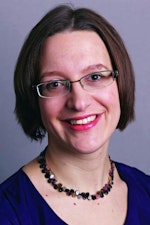IN CONVENTIONAL PHASED-ARRAY TRANSMISSION, information is transmitted in undesired directions through sidelobes. To provide more secure communications, some research has delved into time modulation in arrays. While conventional arrays have static-element phase shifts and weighting, time-modulated arrays exploit an additional degree of freedomtimein order to raise performance. At the University of Illinois at Urbana-Champaign, Michael P. Daly and Jennifer T. Bernhard created a directional-modulation (DM) technique based on the use of phased-array antennas.
With this technique, each element is phase shifted to achieve the desired amplitude and phase of every symbol in a DM scheme for a given direction. Data rates are determined by the switching speed of the phase shifters. Because this signal is direction-dependent, it can be purposely distorted in other directions. This distortion results from the fact that the modulation is produced by the array instead of at the baseband.
When phase shifters are adjusted, the channel transfer function is altered differently for the various directions. As a result, a DM signal can be distorted in undesired directions or send multiple independent signals simultaneously. Even if sidelobes exist, the DM technique can create distortion in almost every undesired transmit direction. In doing so, it will prevent eavesdropping even without knowing the location of undesired receivers. In their work, the researchers describe both a DM transmitter using driving elements and an efficient algorithm for achieving digital modulations. They also manage to measure the security aspect of DM using a bit-error-rate (BER) approach. See "Directional Modulation Technique for Phased Arrays," IEEE Transactions On Antennas And Propagation, September 2009, p. 2633.
